Why there's not more rooftop solar outside NYC as you move farther upstate
Tony Subraj was intrigued by the idea of putting solar panels on the roofs of the apartment buildings his family owns in Queens, where he learned the business as a youngster hauling garbage and fixing what needed to be fixed.
His research into solar power became a pet project. Would the supply of electricity be dependable? Was the cost worth it?
Convinced, he decided to approach his father and uncles, Guyanese immigrants who started Zara Realty in the ‘70s by pooling family money when banks were reluctant to issue them loans.

“It took a little bit to convince them because they’re old school, traditional,” Subraj said one morning this month standing atop a building on 153rd Street surrounded by an array of solar panels. “But then they saw the light. It was more of a dollars and cents thing. How much we would be reducing in our expenses? And when they saw how much we were reducing our electrical utility consumption they were like ‘alright let’s do this.’ ”
That was five years ago. Since then, Zara has added some 6,500 solar panels to 46 buildings centered around the Jamaica neighborhood where Subraj was raised.
In five years, Zara has made back its $6.5 million investment, with the help of tax breaks and other financial incentives provided by the state and city, Subraj says. The panels generate 2.5 million kilowatts of power annually, at times producing about 96% of the power the buildings use.
Concern for a clean environment was part of the allure. “I have two young boys,” said Subraj, 45. “This is our planet. We have to do everything we can to save it.”
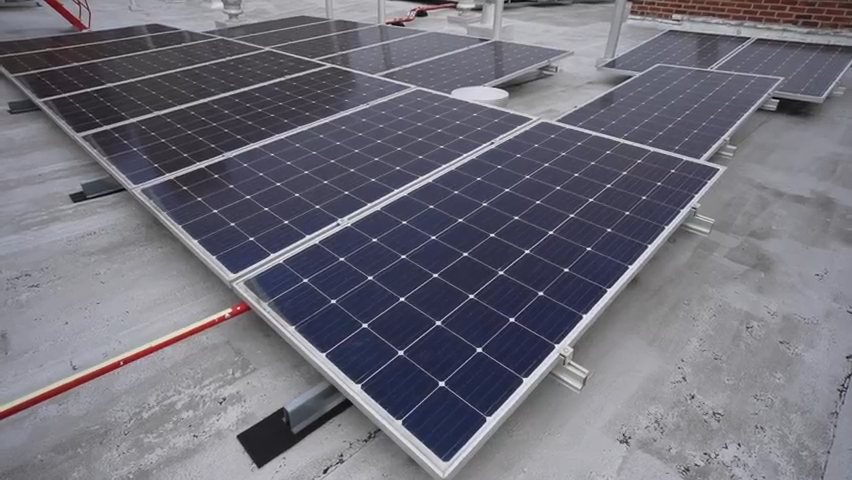
Subraj and other large building owners who’ve turned to solar say it comes down to good business. He made the move to solar before the city enacted Local Law 97, which will force building owners to start reducing carbon emissions by next year.
The financial incentives for those who can cover the investment are substantial.
Transmission: Fossil fuel-burning plants cover power gaps. But they're foiling NY's clean energy plans.
Solar gets the credit
In the Bronx, grocery distributor Krasdale Foods recently completed one of the largest solar energy installations in the city, some 6,000 panels on five acres of roof. Energy produced at the 2.7 megawatt facility — a megawatt powers between 800 and 1,000 homes — will be shared with Krasdale’s Hunts Point neighbors who’ll get a discount on their electric bills.
It’s backed by more than $1.3 million in state funds.
The credits ConEd, the utility that supplies electricity to city customers, offers for producing solar energy is far more generous than what upstate utilities offer, thanks to a state-approved credit system that recognizes the unique value of solar.
That means companies can recoup their investments quicker, making it more likely they’ll switch to solar.
“The value of the electricity produced in Con Edison can be as high as three times as valuable as what’s produced in National Grid upstate, for example,” said Lucie Dupas, the chief delivery officer for San Diego-based PowerFlex, which built Krasdale’s installation and another for the medical products distributor Medline in Orange County.
Dupas said the current slate of incentives and credits encourages large-scale solar developers to work in ConEd’s territory, which includes Westchester County.
“There are areas of upstate New York where we don't really focus our efforts because the value of the incentives and the value of the energy produced by the solar system are not high enough to make the economics pencil on the project,” she said.
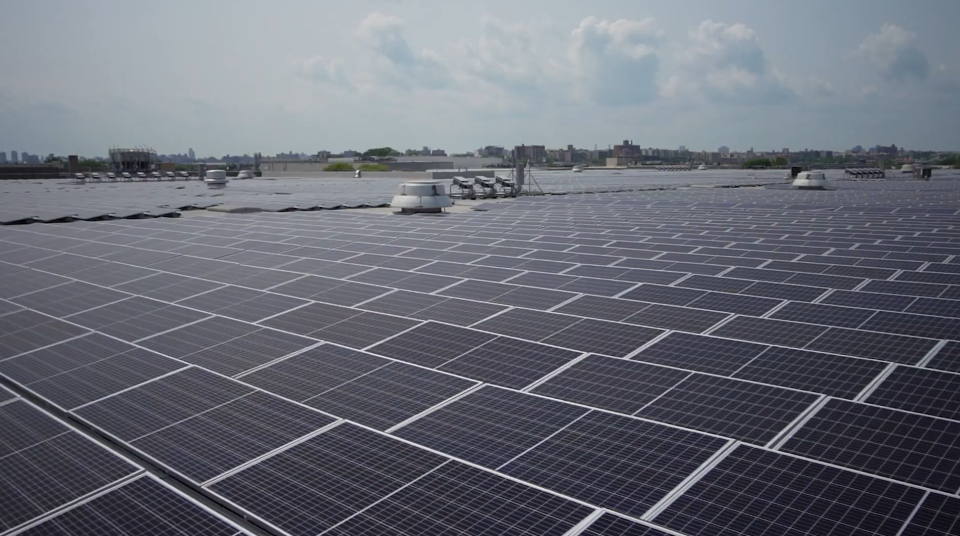
The state has established ambitious goals for reducing carbon emissions, with a 70% reliance on renewable energy by 2030 heading the list.
It’s pinned much of its success on encouraging the development of large solar and wind farms upstate that will deliver the energy down to New York City, lessening the downstate grid’s near total dependence on fossil fuels.
But it also means getting homeowners, businesses and communities to add rooftop solar panels that will relieve the stress on a grid facing surging demand from the electrification of everything from vehicles to heating systems.
And while it may not be the most reliable source of energy, solar can reduce pressure on the grid during the middle of the day when the sun is shining. On May 18, distributed solar hit an all-time high in New York with 3,200 megawatts produced, roughly 20% of the state’s electricity demand that day.
But there’s a long way to go. The state’s current goal is 10,000 megawatts of distributed solar — energy from rooftop or ground-mounted installations that’s used near the spot where it’s produced — by 2030. At the end of June, the state had 4,863 megawatts of distributed solar.
Lawmakers like Didi Barrett, who chairs the Assembly’s energy committee, say New York could be doing more to encourage options like rooftop solar that spare productive agricultural land and the battles that inevitably ensue.
“We should be looking at brownfields and green fields and warehouse tops and lots of other opportunities,” said Barrett, a Democrat whose Hudson Valley district stretches from Poughkeepsie north to Columbia County. “My district has a lot of farms, it's very rural. You drive past so many storage sheds for salt and sand and highway department structures and so many abandoned shopping centers. You can just rattle off a bunch of other possible sites that would make a whole lot of sense.”
The issue has become a flashpoint upstate, where several towns are fighting large-scale wind and solar farms they say threaten wildlife habitats and will mar the region’s pastoral landscape.
The USA Today Network spent the past few weeks speaking to solar developers, large business owners, lawmakers, utilities and state officials to try to find out why more aren’t coming to the same conclusion as Subraj and others.
Eagles: Years after saving the bald eagle, NY backs wind farm projects that could kill 82 of them
No more knocking on doors
Ten years ago, solar developers drove around knocking on the doors of businesses with large roofs, asking them if they ever thought of solar panels.
It could be a tough sell.
But as the cost of solar panels came down and the financial incentives ticked up, companies have been more willing to listen, solar developers say.
Among them was Medline, the nation’s largest distributor of medical products with a warehouse in the town of Montgomery in Orange County, near the New York State Thruway.
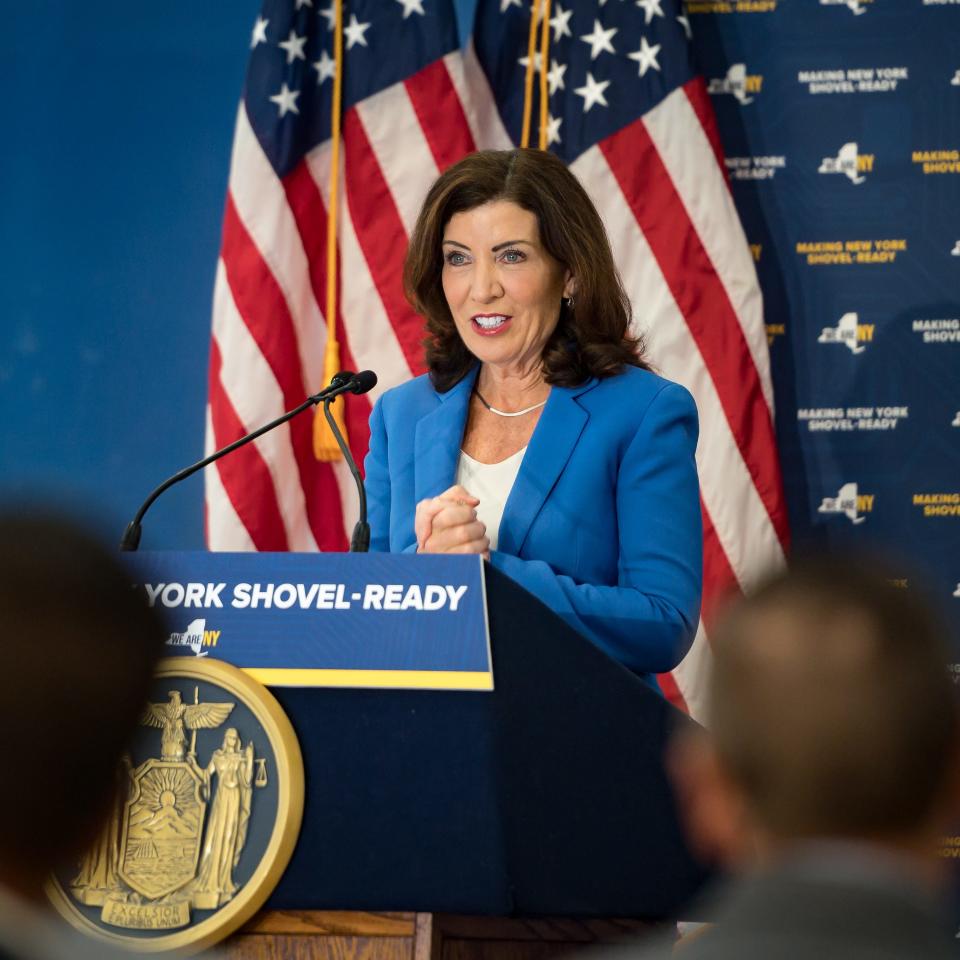
In May, Medline became home to the largest rooftop solar installation in the state, an $8 million project touted by Gov. Kathy Hochul who called it part of “a successful trend of private investment in community-centered projects that are now at the heart of our clean energy transition."
It was developed by PowerFlex, an affiliate of EDF Renewables.
The 17,000 solar panels atop a Medline distribution center will produce 8.5 million kilowatt-hours of energy.
It will be a community solar project, meaning 40% percent of the energy will be used by Medline while the rest will be used by 600 nearby residents who can receive monthly credits on their electric bill if they subscribe.
Medline leveraged $5 million in private investments, while New York Energy Research and Development Authority (NYSERDA) kicked in $3 million through NY-Sun, a state program designed to spur solar use.
The state program which funded much of the project has seen explosive growth over the past decade, establishing New York as the top market in the nation for community solar. It’s already leveraged $7.4 billion in private investments.
Much of that growth has come upstate, where there are 1,690 megawatts of community solar with another 3,042 in the advanced stage of development, according to NYSERDA.
Most are being built on fields of 10 to 30 acres with solar panels mounted into the ground.
A smaller fraction of community solar has gone on rooftops. There are 8.7 megawatts of energy on rooftops upstate, with another 7.4 megawatts in development, NYSERDA says. However, NYSERDA notes, more than 550 total megawatts of rooftop solar has been installed on homes, businesses and public facilities upstate.
Dupas said ground-mounting is cheaper than rooftop installations, which require costly infrastructure and roofs that can handle mounted solar panels.
She praises the state’s work but says more could be done to recognize the costs of rooftop installations, which spare agricultural land.
“They’ve already done a lot and they’re continuing to support us, but the more the state can help, the more projects will get developed and faster too,” Dupas said. “If the project makes a lot of sense financially, then customers like Medline and Krasdale will move forward quickly instead of wondering whether it makes sense for them economically.”
Power: New York gets tough with owners of natural gas plants, forcing some out of business
Micron considering rooftop solar panels
Several companies with buildings upstate, like Amazon warehouses in Buffalo and Syracuse, use rooftop solar.
And Micron, which is spending $100 billion on a semiconductor plant near Syracuse, is considering the option.
“Micron has a strong commitment to sustainability,” a company spokeswoman said. “This includes aiming to achieve 100% renewable electricity forthe new facility, including use of rooftop solar where appropriate as well as offsite resources.”
State officials say the differing compensation levels for upstate and downstate utilities reflect the wholesale power costs in each market as well as infrastructure. By putting solar energy into the grid, a community distributed generation project allows the utility to avoid paying for energy, entitling participating consumers to a credit. And in ConEd’s territory, those energy and infrastructure costs are higher, which means higher credits.
“The upfront NY Sun and Community Adder incentives are not designed to favor one region of the state over another,” said James Denn, a DPS spokesman. “DPS staff works with NYSERDA to ensure the incentives are appropriate to spur development in all parts of the state and reflect the varying costs and incentives throughout the state.”
Community adders cover a portion of the costs of community solar programs.
He notes that the compensation for electricity put into the system, coupled with the NYSERDA incentives, have created “a vibrant market for distributed solar all across New York State.”
The trade group for community solar developers says the state’s varied rates for upstate and downstate utilities make sense.
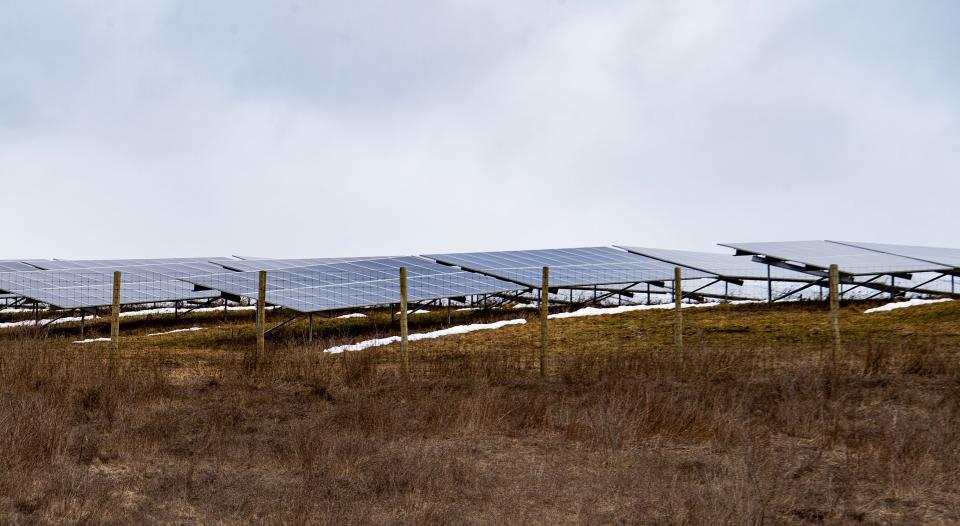
“That is by design,” said Kate Daniel, the northeast regional director for the Coalition for Community Solar Access. “The cost of building (downstate) is also significantly higher — the required lease payments, the labor costs, interconnection costs, transportation, etcetera — all of these make it more expensive to build in the metro area. When you combine those higher costs with the scarcity of the available space to build solar (including suitable rooftops), you need higher incentives in order to draw interest to the ConEd market.”
She said more could be done to increase the number of community solar projects in ConEd’s territory so low to moderate income customers as well as those in disadvantaged communities could benefit.
In New York City and Westchester, there are already 91 megawatts of community solar and another 168 megawatts is being developed, according to NYSERDA.
But PowerFlex fears that the logjam of community solar projects in line for approval upstate is hindering the approval of rooftop projects.
Barrett questions why cost concerns should prevent more rooftop solar from being built upstate and wonders whether the New York Power Authority, a state-owned utility, should take over the job.
“I think that’s a red herring,” she said. “When they say it’s too costly, these are private developers, and it means they’re not making enough money on it.”
She’s sponsoring legislation with State Sen. Michelle Hinchey, a fellow Democrat, this year that she hopes would improve some of the conflicts. It calls on the state to develop a mapping tool to identify land that would be best suited for solar and wind farms.
The mapping tool would identify “previously disturbed and developed sites” like large rooftops, landfills and parking lots. The legislation has the support of the Senate and the Assembly but has not been signed by the governor.
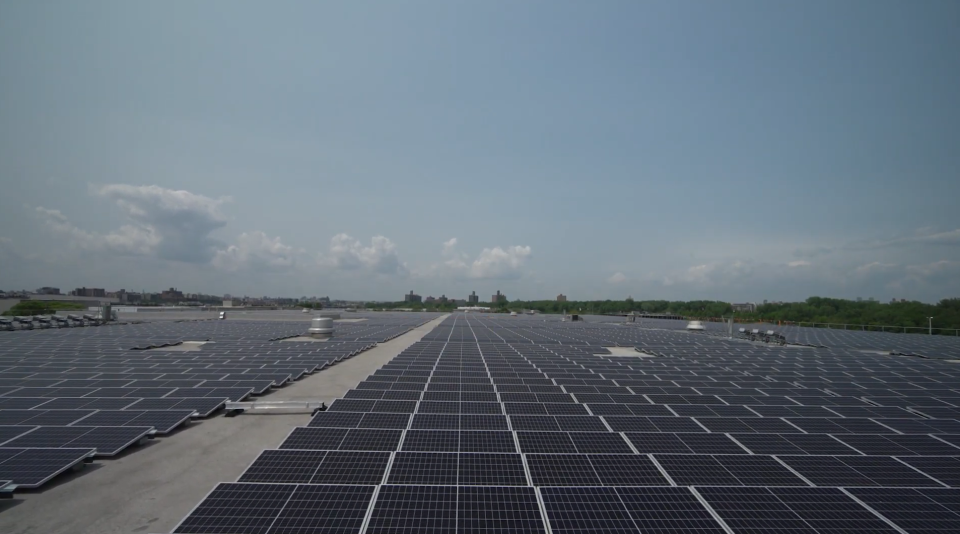
'Do we really want to go through ... shutdowns?'
Gus Lebiak understands the fear companies live with when building a massive solar project.
“We have thousands of customers depending on us,” said Lebiak, the president and chief operating officer of Krasdale.
Krasdale distributes groceries and other merchandise to independent grocery stores in the region.
“Anyone who’s ever been involved in any type of production knows when you turn anything off, when you turn it back on something invariably breaks,” Lebiak said. “Some random router or switch doesn’t work. I can see a CEO sitting there saying ‘Do we really want to go through multiple shutdowns like that?’ ”
Fortunately, the hiccups on the Hunts Point solar installation were minimal.
“Everybody worked together really well,” he said.
Krasdale’s decision to go solar was influenced by the New York City Economic Development Corp. which held the lease on the property and encouraged the company to go solar as part of its push to reduce carbon emissions in buildings.
The energy generated at the Hunts Point site will help about 300 Bronx residents reduce their energy bills.
“The Bronx is an underserved community,” Lebiak said. “We’re pretty happy to be able to do this here. So it’s kind of a win all around. But it is a big investment. Let’s face it. That’s a lot of dollars and ultimately it will pay for itself.”
He understands the hesitation upstate companies might have but says even with the lower compensation rates, it’s still a good investment.
“It would seem to me it would make sense up there even if there weren’t as many credits,” Lebiak said. "It just takes a little longer to pay back.”
This article originally appeared on Rockland/Westchester Journal News: Are rooftops the solution to upstate NY's solar farm problem?

